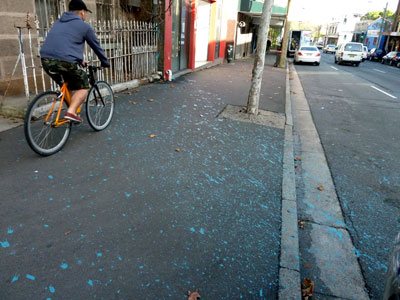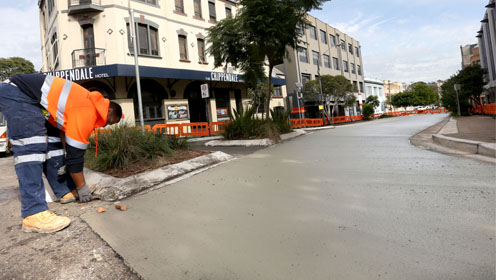Glossy black dance floor or ashen skin or something else entirely? The asphalt pavement stirs the poetic imagination of some writers but the hard truth spoils the romance of the blacktop.
It was Vladimir Nabokov who wrote , ‘Voraciously we consumed those long highways, in rapt silence we glided over their glossy black dance floors’. Australian author Jessica Anderson says of one of her characters, ‘… in her visual memory of Sydney as a city predominantly blue and green and terra-cotta, there had been an element missing. And here it was, this ashen skin covering not only the road, but the footpaths as well’.
Unfortunately that dark covering is making Sydney hotter because it absorbs heat and radiates it back out. Sustainability campaigner Michael Mobbs has the figures to show that suburbs with black roads and few trees suffer badly during heatwaves. It’s called the urban heat island effect, and to counter it the City of Sydney is conducting trials in Chippendale using lighter-coloured surfaces on some roadways. The pale pavement is open grade asphalt filled with concrete slurry.
Mobbs has been monitoring the trial. He says it reduces the temperatures by two to four degrees on a hot day, and predicts that during heatwaves there may be six to eight degrees difference. Death rates rise in cities during heatwaves, so that difference could save lives. Glary though.
Vladimir Nabokov. Lolita. 1955.
Jessica Anderson. The impersonators. 1980.

